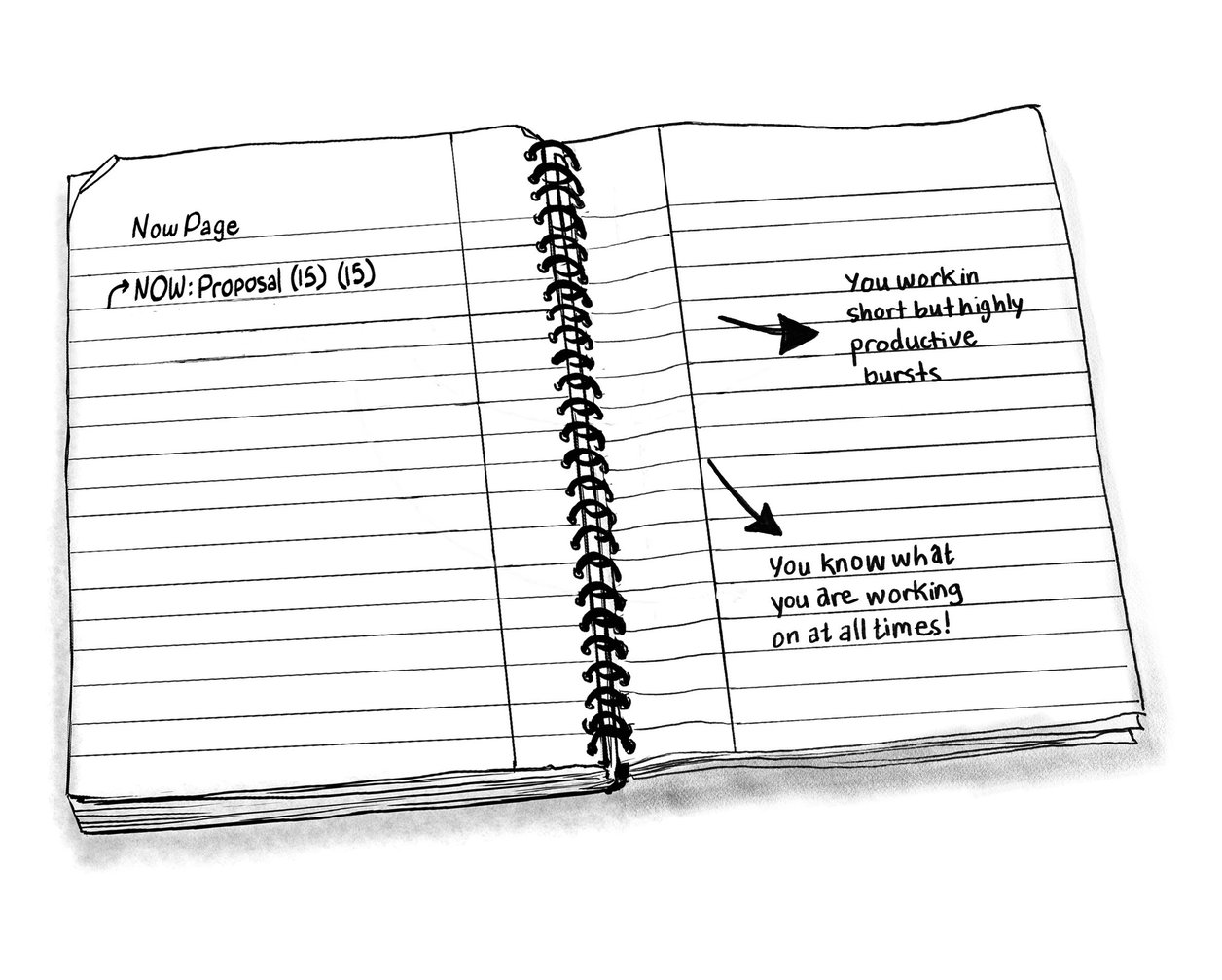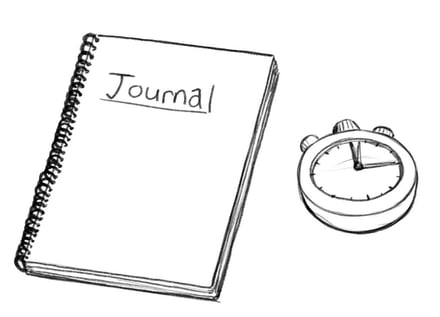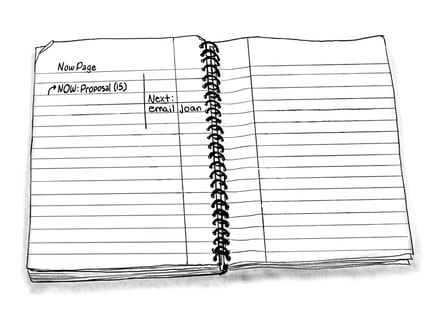 by Pierre Khawand, Founder and CEO
by Pierre Khawand, Founder and CEO
You may have heard of a productivity method called the Pomodoro Technique. The technique calls for a kitchen timer set to 25 minutes; the user chooses a task and focuses on it for 25 minute intervals separated by short breaks. It’s a simple technique developed by Francesco Cirillo in the late 1980s, and has since gained much popularity.
However, things have also changed quite a bit since the 1980s. The Internet was invented. Google came along and grew into an Internet giant valued at more than 600 billion. Facebook launched and connected more than 1.7 billion users. Apple released and sold more than one billion iPhones. Tesla masterminded the revenge of the electric car and launched its self-driving technology. Uber drove the on-demand economy forward and expanded to more than 500 cities in more than 60 countries.
In this increasingly digital world of everything mobile, social, and on-demand, our way of working has changed dramatically since the Pomodoro Technique was created. For this reason I believe an upgrade to the Pomodoro Technique is in order--or maybe not just an upgrade, but a reinvention. That’s why I developed the Perfect 15-Minute Day Method (PDM), partly by my design, and partly by design thinking with a group of more than one hundred early adopters. Here are three key ways this new and updated method of focus and productivity better suits the digital environment we work in presently.
First, let us start with the obvious change: PDM shortens the timed focus interval from 25 minutes down to 15 minutes. This change accommodates both our shorter attention span (resulting from the constant distractions of our digital gadgets), and the highly collaborative and distributed work environment we now live in. Recent research by Gloria Mark finds that the average length of time workers spend on a particular project before switching to another project or being interrupted is only 11 minutes. The majority of our early adopters who tested the new method confirm that the 15-minute timeframe hits the spot for them. For most, 15 minutes proves to be achievable and motivating.
Second, PDM helps us manage our attention and introduces the practice of mindfulness at work by adding a journal note-taking system. Whether you try to focus for 5, 15, or 25 minutes, the core challenge remains the same. Productivity is not about managing time; it is about managing your attention. (Try to even finish this article without distraction, can you?) Managing your attention means having a focus (in this case your task for the 15-minute interval), keeping your attention on your intended focus, noticing whenever your mind wanders or you are distracted and then re-directing your attention back to your intended focus.
The Perfect 15-Minute Day Method has a journaling system for managing your attention. The NOW page of the PDM journal is your primary page for keeping you in the here and NOW. When you decide to work on a task, jot down the task name in a designated NOW page of your journal, and start your timer for 15 minutes. If your mind wanders, a quick glance at your NOW page will remind you exactly what to return your attention to. The NOW page is your compass. When the 15 minutes are up, it is an opportunity to have a mindful moment and decide whether you want to continue or switch to a new task, and then restart your timer for another 15 minutes. The 15-minute timeframe is not a deadline for finishing the task but a check point to help you stay aware of time and make conscious adjustments as needed. This is what a NOW Page might look like at the beginning of the day:
 “Is it really necessary to jot down in writing what I am working on now?” You might ask. “Aren’t we capable of remembering what we are working on? And aren’t we naturally aware of time?” To answer these questions, check out this short video (and please don’t get distracted by additional videos--remember that your task now is to finish this article).
“Is it really necessary to jot down in writing what I am working on now?” You might ask. “Aren’t we capable of remembering what we are working on? And aren’t we naturally aware of time?” To answer these questions, check out this short video (and please don’t get distracted by additional videos--remember that your task now is to finish this article).
Third, PDM lets us befriend interruptions. Interruptions are not necessarily the problem. What we do, or don’t do, with interruptions is the problem. For interruptions that can’t be avoided, our design effort led to a simple technique we call “labeling interruptions.” Labeling your interruption allows you to quickly recover from the interruption and bring your attention back to your intended focus (the 15-minute task). This works for interruptions of all kinds, whether external like chatty colleagues and urgent issues, or internal like our own thoughts and emotions.
For instance, while working on a project proposal there is a nagging voice in the back of your mind saying “I am not good at this.” If left unaddressed, this thought can grow and cause a bad mood, procrastination, and/or lingering self-doubt. Journalist Dan Harris describes this negative progression in his book 10% Happier: "Thoughts calcify into opinions, little seeds of discontent blossom into bad moods, unnoticed back pain makes me inexplicably irritable with anyone who happens to cross my path.” To stop this slippery slope, we again practice labeling the thought or emotion in our journal in order to confront the thought. Here we ascribe a THOUGHT tag and rank the thought’s seriousness to put it into perspective. Finally, you decide on closure if necessary, or at least put it to rest for now, and bring your attention back to your focus (the NOW task).
All in all, the Perfect 15-Method Day Method is much more than a kitchen timer. It is a comprehensive method that accounts for time, thoughts, emotions, and the overall management of your attention to transform you into a highly effective and well-rounded person with increased awareness of self and others. It is a method for the present, to bring our distracted minds to the NOW. To learn more PDM techniques and strategies visit theperfect15minuteday.com.
Article originally published on The Huffington Post.









 by Melissa Sweat, Customer Relationship & Community Manager
by Melissa Sweat, Customer Relationship & Community Manager



 Fourth, PDM encourages you to notice distracting thoughts and emotions by using the THOUGHT and EMOTION tags to label, rank, and move beyond them. MRI scans show that labeling emotions engages the higher order parts of the brain associated with thinking and planning; this indicates an awareness with less reactiveness to the emotion (remember, mindfulness is being aware without reacting). According to Chade-Meng Tan, author of Search Inside Yourself, How to Master Your Mind, and Joy on Demand, holding on - whether by refusing to let something go or by refusing to let something come - is what Buddhist meditators identify as the main cause of human suffering. Instead of holding on, PDM encourages you to welcome and transcend your thoughts and emotions, and, consequently, experience moments of happiness that quickly add up.
Fourth, PDM encourages you to notice distracting thoughts and emotions by using the THOUGHT and EMOTION tags to label, rank, and move beyond them. MRI scans show that labeling emotions engages the higher order parts of the brain associated with thinking and planning; this indicates an awareness with less reactiveness to the emotion (remember, mindfulness is being aware without reacting). According to Chade-Meng Tan, author of Search Inside Yourself, How to Master Your Mind, and Joy on Demand, holding on - whether by refusing to let something go or by refusing to let something come - is what Buddhist meditators identify as the main cause of human suffering. Instead of holding on, PDM encourages you to welcome and transcend your thoughts and emotions, and, consequently, experience moments of happiness that quickly add up. Enough said! Mindfulness at work is needed and is achievable. It is the path to happiness and accomplishments and the best response yet to our work overload. PDM and the teachings of mindfulness thought leaders like Jon Kabat-Zinn, Dan Harris, Chade-Meng Tan, and the research of Dr. Eric Dane, the University of Washington, and the other thousands of individuals and organizations who have undertaken this topic are all here to guide us in undertaking this essential journey to happiness and accomplishment at work.
Enough said! Mindfulness at work is needed and is achievable. It is the path to happiness and accomplishments and the best response yet to our work overload. PDM and the teachings of mindfulness thought leaders like Jon Kabat-Zinn, Dan Harris, Chade-Meng Tan, and the research of Dr. Eric Dane, the University of Washington, and the other thousands of individuals and organizations who have undertaken this topic are all here to guide us in undertaking this essential journey to happiness and accomplishment at work.
 by Melissa Sweat, Online Community Manager
by Melissa Sweat, Online Community Manager


 Guest post by Alicia R. Maher, M.D.
Guest post by Alicia R. Maher, M.D. 


 In his recent post,
In his recent post, 

